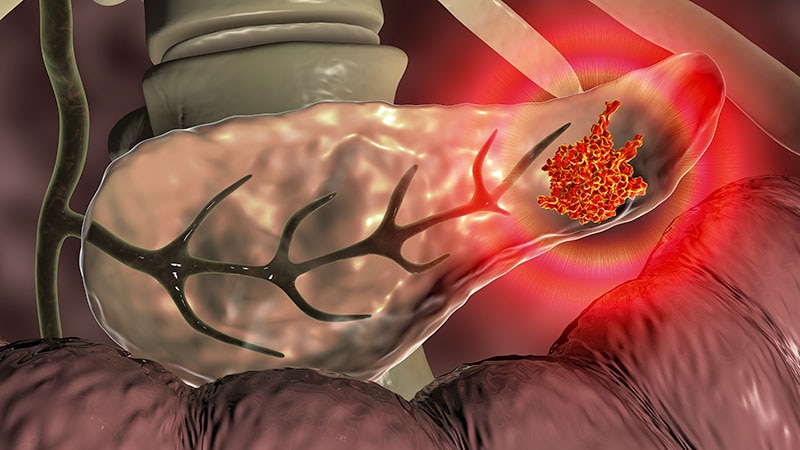Core Concepts
Pancreatic cancer poses a significant health emergency in Europe due to high mortality rates and limited treatment options.
Abstract
The content discusses the alarming rise of pancreatic cancer in Europe, highlighting the challenges associated with the disease and the urgent need for improved prevention, diagnosis, and treatment strategies.
Pancreatic Cancer Statistics
Pancreatic cancer ranks as the seventh most common cancer in Europe but is the fourth leading cause of cancer-related deaths.
By 2030, it is projected to become the second most common cause of cancer mortality.
Challenges and Risk Factors
Lack of awareness, difficult diagnosis, and poor survival rates contribute to the challenges of pancreatic cancer.
Lifestyle factors like obesity, sedentary behavior, and excessive alcohol intake in Europe increase the risk of developing pancreatic cancer.
Other risk factors include smoking, diabetes, chronic pancreatitis, and family history.
Diagnosis and Treatment
Pancreatic cancer is often asymptomatic, making early diagnosis challenging.
Limited treatment options and low survival rates, with only 3% of patients surviving for 5 years.
Advances in patient outcomes have been minimal over the past few decades.
Research and Prevention Efforts
Efforts by Pancreatic Cancer Europe aim to raise awareness, modify lifestyle risks, and fund translational and clinical research.
Screening programs are limited, with a need for cost-effective tests for early detection.
Encouraging developments include projects like PANCAID and PANCAIM focusing on early detection and personalized medicine.
Road to Better Care
Reference centers and increased research funding are crucial for improving pancreatic cancer care in Europe.
Finland's specialized hospitals model and the need for more research funding to improve outcomes.
Despite some progress in the US, pancreatic cancer remains a significant threat to public health in Europe.
Europe Is Facing a Pancreatic Cancer Emergency
Stats
By 2030, pancreatic cancer is predicted to become the second most common cause of cancer mortality.
Life expectancy at diagnosis is only 4.6 months, with a 3% survival rate at 5 years.
Only 2% of EU funding on cancer is spent on pancreatic cancer.
Quotes
"It's a health emergency for society, with mortality rates at over 90%." - Professor Alfredo Carrato
"It's a dismal disease. It's not accessible for any easy screening or surveillance. Even early diagnosis is too late with pancreatic cancer." - Professor Mattias Löhr
Key Insights Distilled From
by Siobhan Harr... at www.medscape.com 01-25-2024
https://www.medscape.com/viewarticle/europe-facing-pancreatic-cancer-emergency-2024a10001su
Deeper Inquiries
How can European countries collaborate to improve pancreatic cancer outcomes?
Collaboration among European countries is crucial to improving pancreatic cancer outcomes. One way to achieve this is by establishing reference centers in health policy programs that specialize in pancreatic cancer treatment. These centers can share best practices, research findings, and treatment protocols, leading to better patient outcomes. Additionally, networking between countries can facilitate the exchange of knowledge and resources, enabling a more coordinated approach to tackling the disease. By pooling research funding and expertise, European countries can work together to develop innovative screening methods, personalized treatments, and early detection strategies for pancreatic cancer.
What are the challenges in early diagnosis and treatment of pancreatic cancer?
Early diagnosis and treatment of pancreatic cancer pose significant challenges due to the nature of the disease. Pancreatic cancer is often asymptomatic in its early stages, making it difficult to detect until it has advanced. The nonspecific symptoms that do appear, such as back pain, weight loss, and nausea, can be easily overlooked or attributed to other conditions, delaying diagnosis. Additionally, the lack of effective screening programs for the general population further hinders early detection. Treatment options are limited, with only a small percentage of patients being suitable candidates for surgery. Furthermore, the aggressive biology of pancreatic cancer and the lack of biomarkers for personalized treatment make it challenging for oncologists to provide effective therapies. These challenges underscore the urgent need for improved diagnostic tools, innovative treatments, and increased research funding to enhance outcomes for pancreatic cancer patients.
How can lifestyle modifications impact the incidence of pancreatic cancer in Europe?
Lifestyle modifications play a significant role in impacting the incidence of pancreatic cancer in Europe. Risk factors such as obesity, sedentary behavior, excessive red meat consumption, and alcohol intake are prevalent in European societies and contribute to the development of pancreatic cancer. By promoting healthy lifestyle habits, including regular exercise, a balanced diet, and limited alcohol consumption, the incidence of pancreatic cancer can be reduced. Public health initiatives aimed at raising awareness about the link between lifestyle choices and cancer risk can empower individuals to make informed decisions about their health. Implementing primary prevention programs that focus on modifying lifestyle risks can help prevent the onset of pancreatic cancer and reduce the burden of the disease in Europe. Additionally, investing in research to identify high-risk populations and develop effective screening methods can further support early detection and intervention efforts.
0
